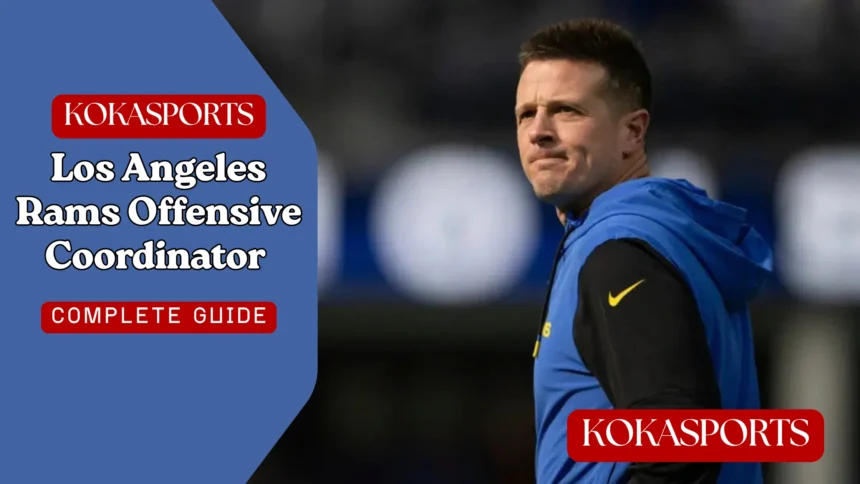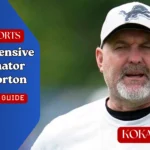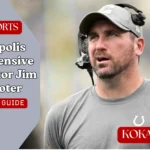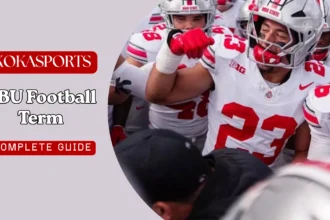The Los Angeles Rams have always been known for their explosive offense and smart play-calling. From their early days in 1936 as the Cleveland Rams to their current home at SoFi Stadium, this franchise has built a reputation on offensive innovation. Today, the Los Angeles Rams offensive coordinator role is one of the most important positions in the entire organization, directly impacting how the team scores points and wins games.
The coordinator doesn’t just draw up plays they shape the identity of the entire offense. They work closely with the head coach to create game plans, adjust to opponent defenses, and put players in the best position to succeed. For the Rams, having a strong offensive coordinator means maximizing the talents of star players like quarterback Matthew Stafford and creating an attack that keeps defenses guessing.
In this guide, you’ll learn everything about the current Rams offensive coordinator Mike LaFleur, his coaching journey, his relationship with head coach Sean McVay, and how he’s shaping one of the NFL’s most exciting offenses. Whether you’re a longtime fan or just getting into pro football, this article will give you deep insights into how the Rams offense works and why the coordinator role is so crucial.
Who Is the Los Angeles Rams Offensive Coordinator?
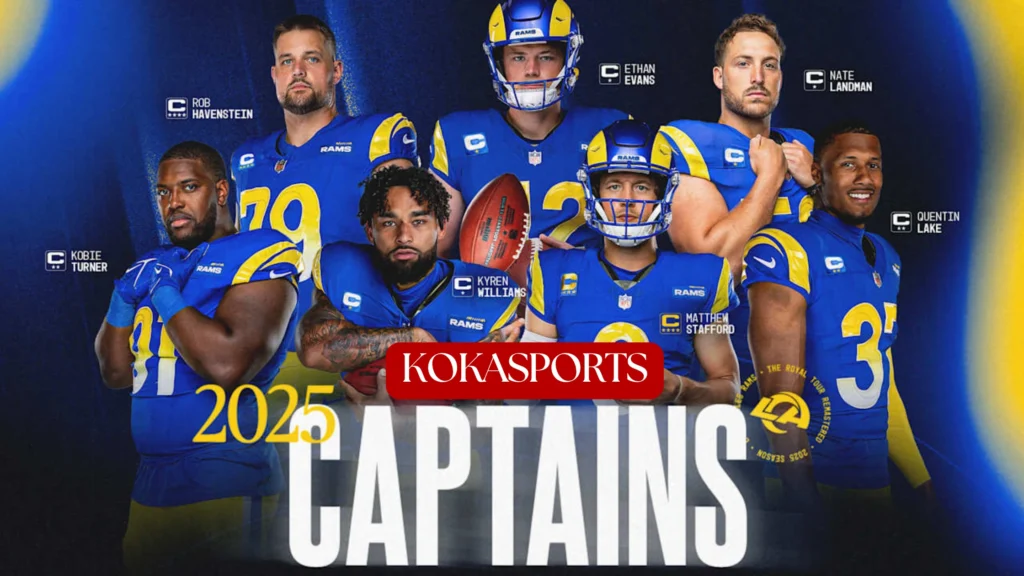
Mike LaFleur currently serves as the offensive coordinator for the Los Angeles Rams. He joined the organization to bring fresh ideas while working within Sean McVay’s proven offensive system. LaFleur is the younger brother of Matt LaFleur, who is the head coach of the Green Bay Packers, showing that coaching excellence runs in the family.
Before joining the Rams, LaFleur spent time with multiple teams, learning different offensive schemes and building his reputation as a creative play-caller. His journey through the NFL has been marked by constant learning and adaptation. He’s known for his ability to design plays that get players open quickly and create explosive opportunities downfield.
The relationship between coordinator Mike LaFleur and head coach Sean McVay is built on mutual respect and shared offensive philosophy. Both coaches believe in using pre-snap motion, creative formations, and a balanced attack to keep defenses off balance. McVay gives LaFleur freedom to contribute ideas while maintaining the overall vision for the Rams’ offensive approach.
What LaFleur brings to the Los Angeles Rams is a fresh perspective on a system that has already proven successful. He understands how to attack modern defenses, especially those that focus on stopping explosive plays. His experience working with different quarterback styles helps him adjust the game plan to fit Matthew Stafford’s strengths a strong arm, quick decision-making, and the ability to hit deep shots when the opportunity arises.
Read More: Lions Offensive Coordinator John Morton: Detroit’s 2025 Offensive Leader
Mike LaFleur’s Coaching Background and Career Path
Mike LaFleur’s coaching journey began far from the bright lights of the NFL. He started in college football, learning the basics of offensive strategy and player development. These early years taught him the fundamentals that would later define his coaching philosophy attention to detail, player relationships, and creative problem-solving.
His breakthrough came when he joined the San Francisco 49ers coaching staff. Working under Kyle Shanahan, LaFleur learned one of the most respected offensive systems in modern NFL history. The Shanahan system emphasizes running back efficiency, play-action passing, and getting the ball to playmakers in space. This experience shaped how LaFleur thinks about offense even today.
| Coaching Position | Team | Years | Key Learning |
|---|---|---|---|
| Offensive Assistant | San Francisco 49ers | 2017-2020 | Shanahan system principles |
| Offensive Coordinator | New York Jets | 2021-2022 | Head coordinator experience |
| Passing Game Coordinator | Los Angeles Rams | 2023-present | McVay’s offensive approach |
After his time in San Francisco, LaFleur became the New York Jets offensive coordinator for the 2021 and 2022 seasons. This role gave him valuable experience calling plays and managing an entire offense. While the Jets struggled during those years, LaFleur learned important lessons about adapting to roster limitations and building an offense around available talent.
When the opportunity came to join the Los Angeles Rams, LaFleur jumped at the chance. Working with an established system, a veteran quarterback in Matthew Stafford, and one of the best offensive minds in head coach Sean McVay made the position extremely appealing. The transition allowed him to focus on what he does best designing creative plays and helping players perform at their highest level.
The Role of an Offensive Coordinator in the NFL
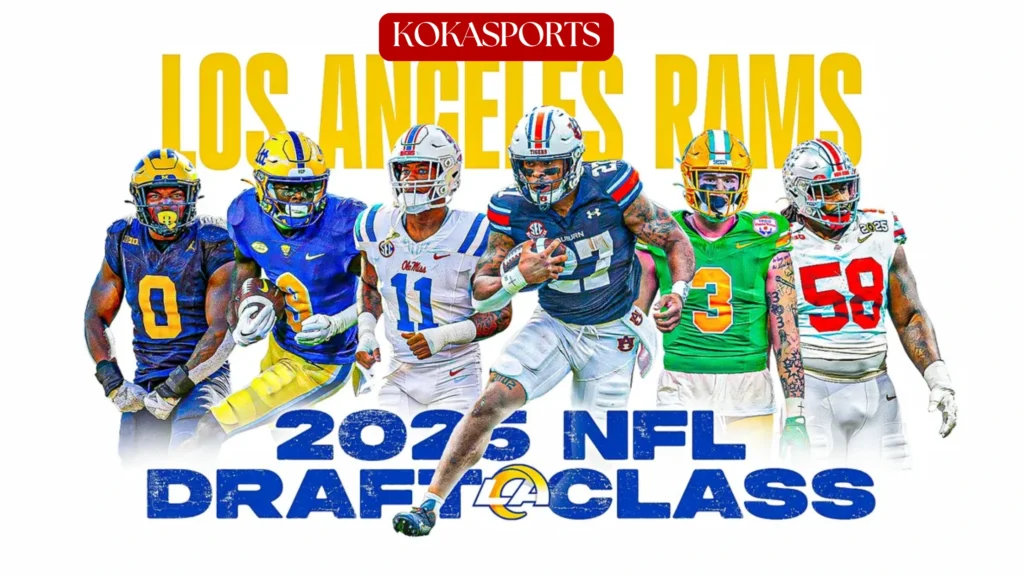
An offensive coordinator does much more than just call plays on game day. They spend countless hours each week studying opponent defenses, creating game plans, and working with position coaches to develop individual players. The coordinator is essentially the CEO of the offense, overseeing every aspect of how the team moves the ball and scores points.
The difference between an offensive coordinator and a head coach comes down to scope of responsibility. While the head coach oversees the entire team, including defense, special teams, and organizational decisions, the coordinator focuses exclusively on the offensive side of the ball. However, in organizations like the Los Angeles Rams, where McVay has an offensive background, these roles often overlap significantly.
Coordinator Mike collaborates closely with position coaches throughout the week. The wide receivers coach works on route concepts and releases. The quarterbacks coach focuses on footwork and decision-making. The offensive assistant staff helps break down film and prepare scouting reports. All of these coaches report to the coordinator, who synthesizes their input into a cohesive game plan.
During games, the offensive coordinator makes real-time adjustments based on what defenses are showing. If opponents are playing tight coverage on wide receiver targets, the coordinator might call more running plays or screen passes. If defenses are stacking the box against the run, the coordinator will attack with vertical passing concepts. This constant chess match between coordinator and defensive coordinator defines NFL strategy.
Los Angeles Rams Offensive Philosophy and Scheme
The Los Angeles Rams offense under McVay and LaFleur is built on several core principles that create consistent success. Pre-snap motion is used on nearly every play, forcing defenses to reveal their coverage intentions before the snap. This gives quarterback Matthew Stafford critical information about where to go with the football.
Timing and spacing are equally important. Every route is designed with precise depth and break points, allowing the quarterback to deliver the ball on time to open receivers. The Rams use bunch formations, stacked alignments, and other creative groupings to create natural receiver releases and confusion for defensive backs.
The running game serves as the foundation for everything else. Running back Kyren Williams provides a reliable ground attack that keeps defenses honest. When opponents respect the run threat, the Rams use play-action to create explosive touchdown opportunities downfield. Rams quarterback Matthew Stafford is particularly effective on play-action passes, using his arm strength to hit deep shots.
Key offensive players like Cooper Kupp, Puka Nacua (when healthy), and other wide receiver weapons give the coordinator multiple ways to attack. The scheme is designed to get these playmakers the ball in space where they can use their skills after the catch. Whether it’s a receiver running a quick slant or a tight end finding soft spots in zone coverage, every play has multiple options built in.
Recent adjustments have focused on protecting Matthew Stafford against aggressive pass rushes. The Rams have incorporated more quick-game concepts, receiver screens, and maximum protection schemes to keep their franchise quarterback upright. These changes show how LaFleur adapts the system to match current roster strengths and opponent tendencies.
The Relationship Between Mike LaFleur and Sean McVay
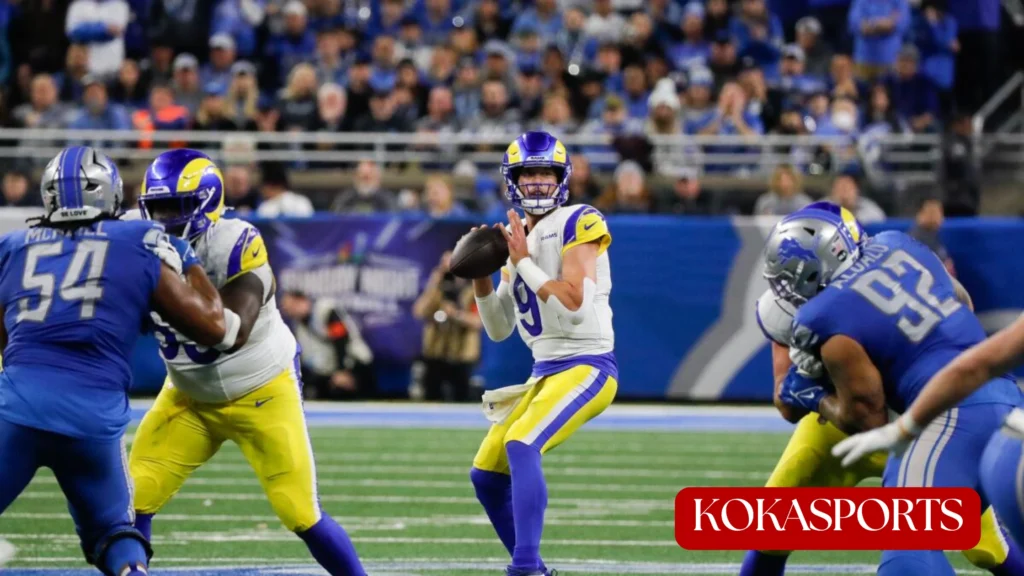
The partnership between offensive coordinator Mike LaFleur and rams head coach Sean McVay represents one of the most important relationships in the organization. McVay is known throughout NFL history for developing offensive minds who later become head coaches themselves. His coaching tree includes talented coordinators who have taken his principles and created their own versions of his system.
Play-calling responsibilities are handled primarily by McVay, who has always been a hands-on play-caller. However, LaFleur contributes significantly to game planning, situational play-calling, and in-game adjustments. During the week, both coaches collaborate on the game plan, with LaFleur often designing specific concepts that take advantage of opponent weaknesses.
This collaborative approach benefits the entire offense. Los angeles rams quarterback Matthew stafford gets input from multiple coaching perspectives, helping him see different angles and solutions to defensive challenges. Position coaches feel empowered to contribute ideas, knowing that both McVay and LaFleur value creative thinking and innovation.
During press conference appearances, both coaches speak highly of their working relationship. McVay has praised LaFleur’s ability to connect with players and his creativity in designing plays. LaFleur frequently credits McVay for creating an environment where coaches can grow and develop their skills. This mutual respect creates a positive atmosphere that extends throughout the offensive meeting rooms.
Notable Achievements and Challenges
Since joining the Los Angeles Rams, LaFleur has helped the offense maintain its identity despite various challenges. The team has continued to produce explosive plays, with multiple touchdown drives and efficient scoring opportunities. Statistical improvements in third-down conversion rate and red-zone efficiency show the impact of his detailed game planning.
However, challenges exist as well. Offensive line injuries and roster turnover have forced constant adjustments. The coordinator has needed to modify protection schemes and play-calling patterns to account for personnel limitations. Receiver injuries have also tested the depth of the system, requiring LaFleur to develop younger players and find ways to maintain production.
Key accomplishments include:
- Maintaining offensive efficiency despite roster changes
- Developing creative solutions to protection issues
- Helping Matthew Stafford continue performing at a high level
- Creating opportunities for emerging playmakers
- Adapting the system to match available personnel
The way LaFleur has handled these obstacles shows his growth as a coordinator. Rather than forcing players into uncomfortable roles, he’s adapted the scheme to fit their strengths. This flexibility is essential in today’s NFL, where roster construction changes constantly due to injuries, free agency, and salary cap considerations.
Historical Context: Past Los Angeles Rams Offensive Coordinators
The Los Angeles Rams have featured several influential offensive coordinators throughout their franchise history. Mike Martz created “The Greatest Show on Turf” offense in the late 1990s and early 2000s, revolutionizing how teams approached the passing game. That system produced explosive scoring and helped the rams win a Super Bowl.
Offensive coordinator Kyle Shanahan (Kyle, not Mike) brought his father’s West Coast principles to the Louis Rams during his tenure. His time with the organization laid groundwork for future success, even though the team struggled during those years. The emphasis on zone-running schemes and play-action passing remained influential long after he departed.
More recently, coordinators working under McVay have gone on to significant roles elsewhere. These coaches learned from the Rams system and took those principles to other organizations. This pattern shows how the Los Angeles Rams have become a breeding ground for offensive innovation in the NFL.
LaFleur’s approach differs from past coordinators in his emphasis on adaptability. While previous systems relied heavily on specific personnel groupings or player types, LaFleur focuses on creating advantages regardless of available talent. This flexibility helps the Rams offense maintain consistency even when dealing with injuries or roster changes.
Media Insights and Future Outlook
Mike LaFleur has shown professionalism and transparency in his media interactions. During press conference sessions covered by outlets like the Los Angeles Times, he discusses his offensive philosophy and takes accountability for performance issues. His communication style demonstrates both confidence and humility essential traits for any successful coordinator.
Looking ahead, LaFleur has positioned himself for potential head coach opportunities. Many successful coordinators eventually make the jump to leading their own teams, and LaFleur’s experience and family coaching background make him an attractive candidate. However, his immediate focus remains on helping the Los Angeles Rams compete for championships.
The future of the Rams offense depends on several factors. How will rams qb Matthew Stafford’s performance hold up as he ages? Can the team develop young receiver talent to complement established stars? Will the offensive line improve enough to consistently protect and create running lanes? These questions will define whether LaFleur continues building on recent success or needs to make significant system adjustments.
Predictions for the coming seasons:
- Continued emphasis on quick-passing concepts to protect the quarterback
- Development of younger wide receiver talent through creative play design
- Increased use of special teams concepts integrated with offensive schemes
- More situational flexibility based on opponent-specific game planning
Conclusion
The Los Angeles Rams offensive coordinator role represents one of the most important positions in the organization. Mike LaFleur has brought creativity, adaptability, and deep system knowledge to a franchise already known for offensive excellence. His work with rams head coach Sean McVay creates a partnership that benefits every player on offense.
From Los Angeles Memorial Coliseum to SoFi Stadium, the Rams have always emphasized offensive innovation. Whether celebrating achievements like offensive rookie of the year awards or overcoming challenges like defensive player injuries affecting offensive rhythm, the coordinator must constantly adjust and improve.
Los Angeles Rams fans can feel confident knowing their offensive system is in capable hands. LaFleur’s background, combined with McVay’s proven track record, creates an environment where players like Los Angeles Rams wide receiver talents and Los Angeles rams tight end Terrance Ferguson can thrive. The future looks bright for an offense that continues evolving while staying true to its core principles of creativity, balance, and explosive playmaking potential.
FAQs
Are Mike and Matt LaFleur related?
Yes, Mike LaFleur is the younger brother of Matt LaFleur, the Green Bay Packers’ head coach.
Why did the Rams fire Jeff Fisher?
The Los Angeles Rams fired Jeff Fisher in 2016 after multiple losing seasons and a struggling offense.
Who was Sean McVay an offensive coordinator for?
Before joining the Rams, Sean McVay was the offensive coordinator for Washington (2014–2016) under Jay Gruden.
Why did Liam Coen leave the Rams?
Liam Coen left the Rams to return to Kentucky as offensive coordinator, seeking a leadership role and college experience.
Who is the current offensive coordinator for the Los Angeles Rams?
Offensive Coordinator Mike LaFleur leads the Rams offense, bringing experience from the 49ers and Jets.
What is Mike LaFleur’s coaching background?
LaFleur rose from college coaching to the NFL, mastering the Shanahan system before joining the Rams.
How is the Los Angeles Rams offense performing under LaFleur?
The Rams offense remains efficient and adaptable, led by Matthew Stafford’s strong play.
Has Mike LaFleur ever been a head coach?
No, but his success as an offensive coordinator makes him a strong future head coach candidate.

